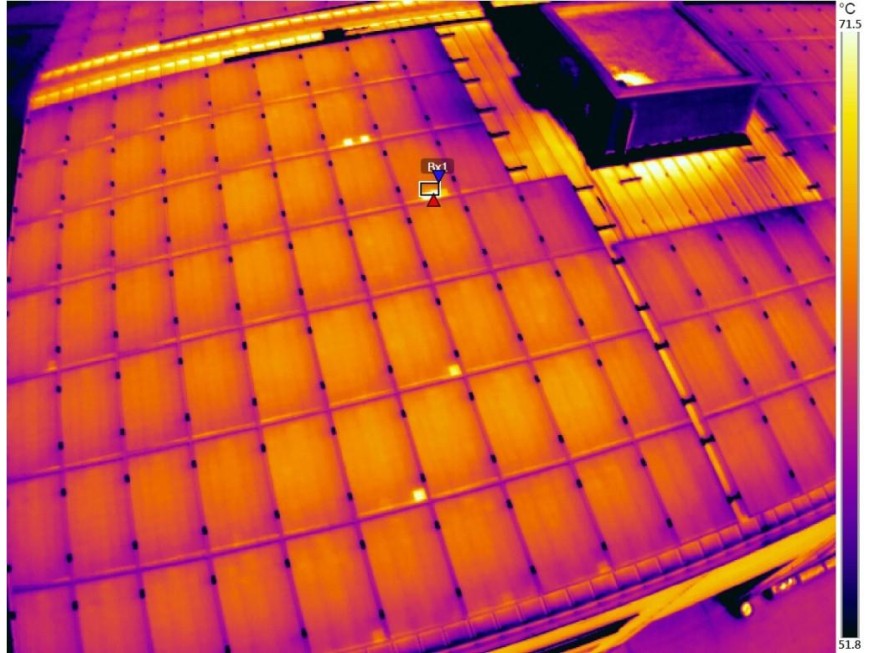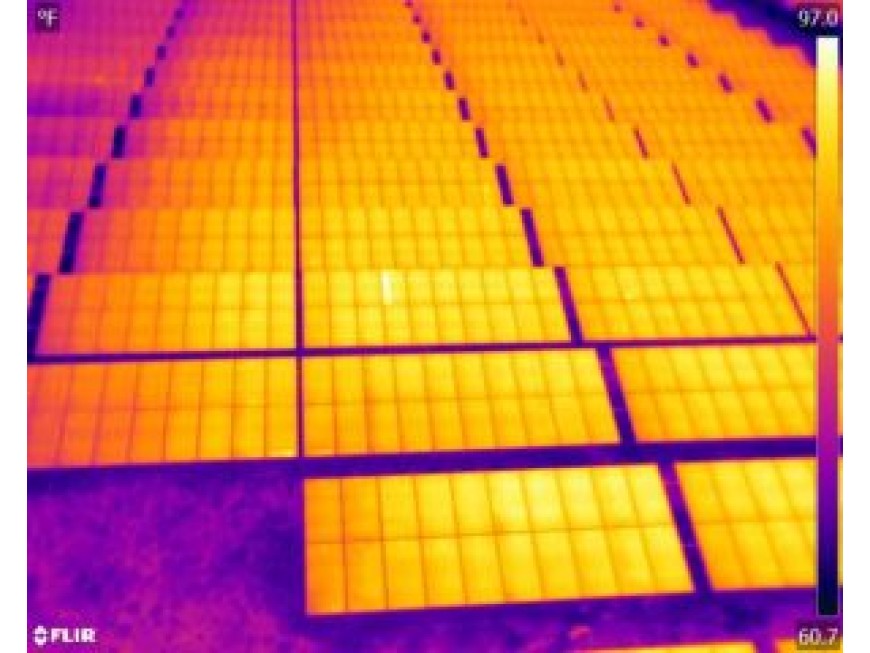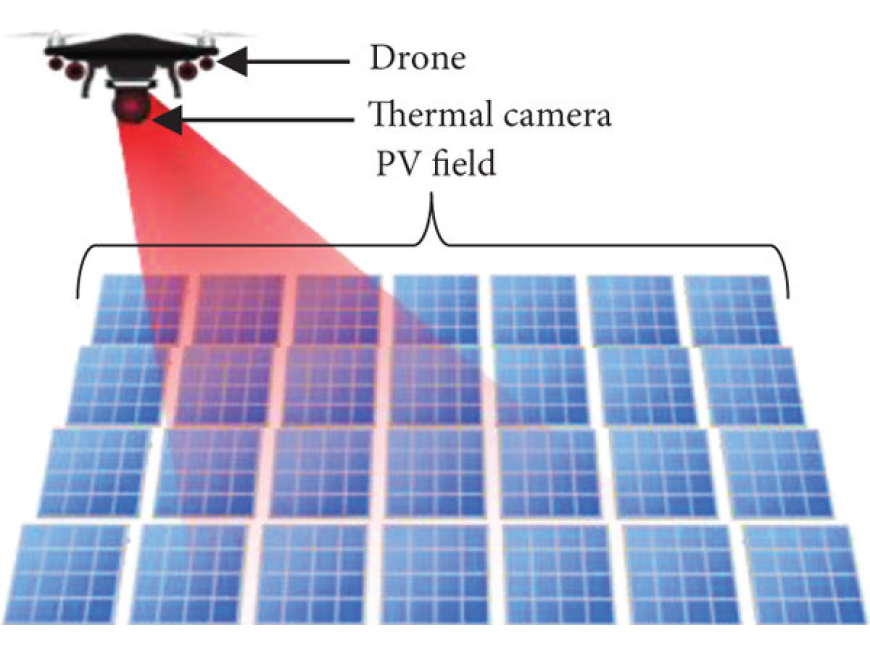Solar Farm Aerial Inspection Using Drones
From the ground, solar field inspection is an intense job. Workers using handheld equipment can take hours to days to inspect solar panels and may put themselves in hazardous situations in the process.
Pro thermal imaging solutions make it possible to quickly inspect large geographic areas and pinpoint solar panel problems from the air. Locating potential problems before a failure happens can keep PV fields running at peak efficiency, saving you time and giving money back to your bottom line.
Aerial thermal imaging kits are capable of detecting hot spots from 50 meters above the ground at a 300 kW level power station. You can view thermal images taken from the sky on a tablet at hand. This enables you to promptly locate abnormal spots and respond to the heat-induced swelling of the junction box on the back of the panel. You can also locate cluster defects by looking for discolored parts on the screen to promptly identify abnormal power spots. Early discovery is important especially for cluster defects that may cause a 33 percent power reduction in a solar panel. Incorporating thermal inspections into your routine maintenance plan will reduce your inspection times from weeks to hours when using our aerial thermal imaging solutions. You’ll work more safely during inspections by reducing your exposure to the elements, and it will help improve your overall efficiency.
Here are some key benefits of utilizing thermal drones for solar field inspections:
Enhanced Efficiency and Speed:
Thermal drone inspections significantly improve the efficiency and speed of solar field assessments. Drones equipped with thermal imaging cameras can quickly capture high-resolution thermal images of the entire solar field, allowing for comprehensive inspections in a fraction of the time compared to traditional manual inspections.
Early Detection of Anomalies:
Thermal imaging technology enables the early detection of anomalies in solar panels. By detecting temperature variations, thermal drones can identify hotspots, cold spots, or areas of inconsistent thermal patterns. These anomalies may indicate defects, such as malfunctioning cells, loose connections, or dirt accumulation, which can impact the overall performance of the solar field.
Improved Maintenance Planning:
By providing detailed thermal data, drone inspections help in planning targeted maintenance activities. The precise identification of problematic areas allows maintenance teams to focus their efforts on specific panels or sections that require attention, optimizing resources and reducing maintenance costs.
Cost Savings:
Thermal drone inspections contribute to cost savings in multiple ways. They minimize the need for manual labor and physical access to elevated or remote areas, reducing associated labor costs and safety risks. Additionally, by identifying and addressing issues promptly, thermal inspections prevent potential long-term damages that could result in expensive repairs or loss of energy production.
Preventive Maintenance:
Regular thermal drone inspections facilitate proactive and preventive maintenance practices. By detecting potential issues before they escalate, such as deteriorating panels or faulty electrical connections, maintenance teams can address them promptly, ensuring optimal performance and extending the lifespan of the solar field.
Improved Safety:
Drone inspections eliminate or reduce the need for workers to physically access elevated or hazardous areas. This significantly improves safety by minimizing the risks associated with working at heights, navigating uneven terrain, or encountering wildlife in remote locations.
Data-driven Decision Making:
Thermal drone inspections provide valuable data and insights for data-driven decision making. Thermal images captured by drones can be analyzed and interpreted to generate comprehensive reports, highlighting the performance and health of individual panels or the entire solar field. This data helps stakeholders make informed decisions regarding maintenance strategies, system upgrades, or potential warranty claims.
Environmental Impact:
By improving the efficiency and performance of solar fields, thermal drone inspections contribute to reducing the environmental impact of renewable energy generation. Early detection and resolution of issues help maximize energy production, minimizing the need for fossil fuel-based alternatives and reducing greenhouse gas emissions.






